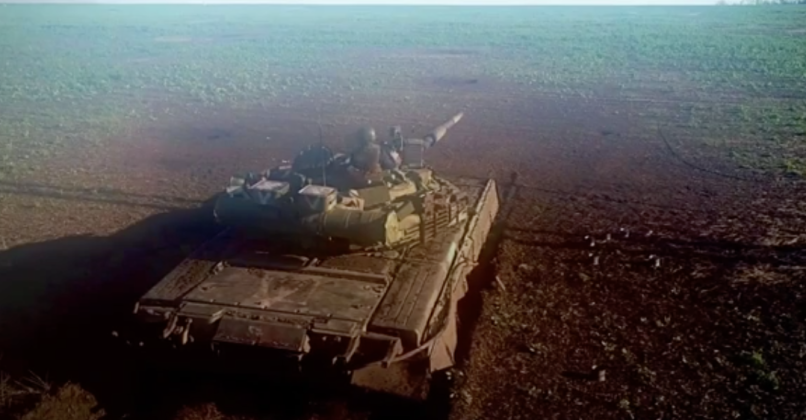News
Russia Restarting Production of T-80 Tanks After 27 Year Halt: How Will the New Variants Look?
Russia’s second largest tank factory at Omsktransmash is working to restart production of the T-80 tank, which will supplement current production of the T-90M and T-14 tanks at the Uralvagonzavod factory located in the Ural Mountains. Production of the T-80 is thought to have ended in 1996, with the disintegration of the Soviet Union leading post-Soviet Russia to focus funding on the T-72 – specifically the enhanced T-72BU variant which was re-designated the T-90 in the early 1990s. The T-80 was the most capable tank in the Soviet Army, with the most advanced variant the T-80UK widely considered the most advanced in the world in terms of overall performance. The class’ much higher production and operational costs compared to the T-72, however, led the Russian Defence Ministry to favour the T-72 and T-90 which were seen as more cost effective. Restarting T-80 production comes as Russia has significantly increased defence expenditures due to both ongoing hostilities in Ukraine and escalating tensions with a fast expanding NATO, and as neighbouring Poland has placed very large orders for modern tanks including South Korean K2 Black Panthers. A significant increase in state revenues due to the rise in oil prices has also been an important facilitator of increased Russian defence spending. Modernised T-80 variants such as the T-80BVM have reportedly performed well in combat in Ukraine, which is thought to have influenced the decision to invest in the class.

It remains uncertain what specifications the T-80 will be produced to, Russia having never moved past the capabilities of the Soviet T-80UK before production was terminated. Due to their high operational costs, however, it is likely that the tanks will be modernised to a standard at least equivalent to the T-90M which entered service in 2020, and possibly to a significantly higher standard still to justify fielding the vehicles. One possibility is that the tanks will integrate features from the newer T-14 tank, which has yet to enter service but has seen at least one batch manufactured. This could include the T-14’s 2A82-1M main gun and its autoloader, which would allow the tank to deploy rounds such as the Vakuum-1 APFSDS with 1,000mm long penetrators, providing a world leading capability against enemy armour. The gun has triple the engagement range of Western tanks. Integration of Malachit explosive reactive armour also remains a significant possibility, and would provide significantly superior protection to the Relikt armour integrated onto the T-90M.

The T-80 chassis was long considered better suited to carrying larger guns and heavier armour, with the tanks even integrating 152mm guns for testing purposes in the Soviet Union as an upgrade over the standard 125mm guns used by the T-72/90, T-80 and now the T-14. It remains uncertain how quickly T-80s can be brought back into production, on what scale they will be produced, and the extent to which the basic design will be modernised. Proposals for very deep modernisations were made in the 1990s but never realised due to lack of funding, one of which was the Black Eagle variant which reached prototype stages with an elongated chassis and unmanned turret. One notable option is that the tanks could see their gas turbine engines replaced by traditional diesel engines, as was done in the Soviet Union for the T-80UD variant, which significantly reduced maintenance needs and production and operational costs at the expense of mobility and cold weather performance. With all T-80UDs having been produced in Ukraine, however, starting production of diesel powered variants at Omsktransmash may require additional investments.












